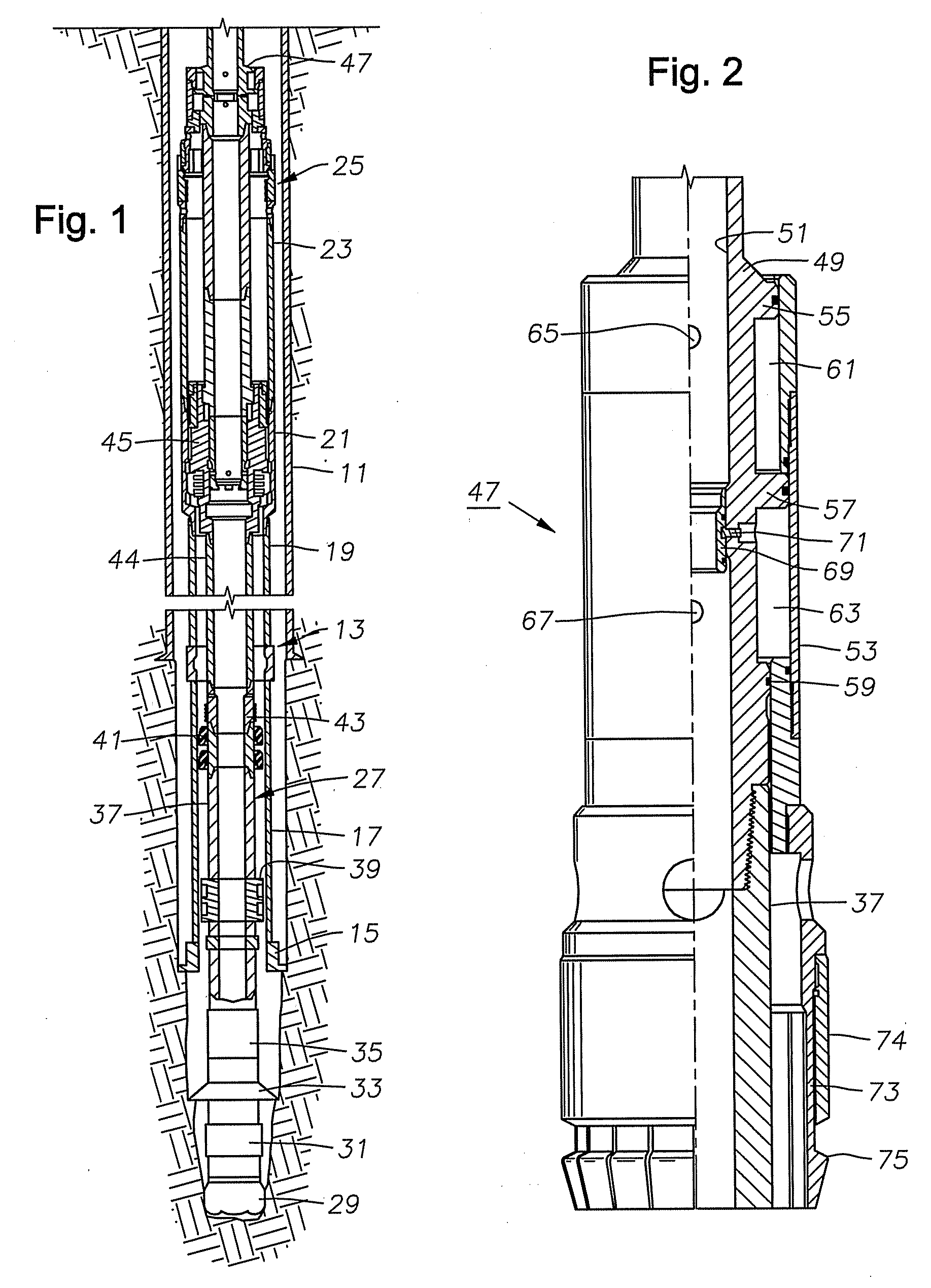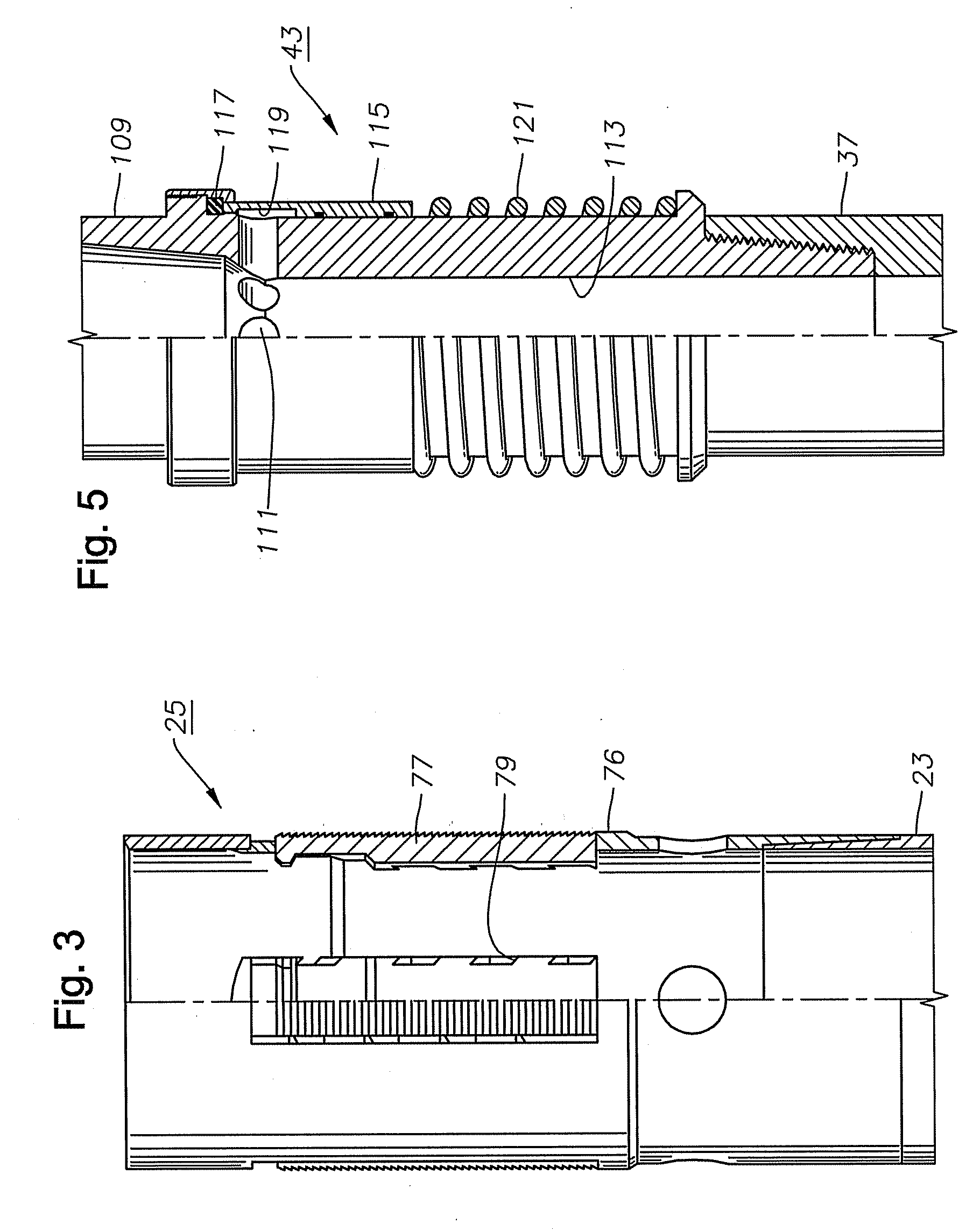Liner Drilling and Cementing System Utilizing a Concentric Inner String
a cementing system and inner string technology, applied in the field of oil and gas well drilling, can solve the problems of limiting the length of the liner, not extending back, and not allowing one to employ components that must be retrieved,
- Summary
- Abstract
- Description
- Claims
- Application Information
AI Technical Summary
Problems solved by technology
Method used
Image
Examples
Embodiment Construction
[0030]Referring to FIG. 1, a well is shown having a casing 11 that is cemented in place. An outer string 13 is located within casing 11 and extends below to an open hole portion of the well. In this example, outer string 13 is made up of a drill shoe 15 on its lower end that may have cutting elements for reaming out the well bore. A tubular shoe joint 17 extends upward from drill shoe 15 and forms the lower end of a string of liner 19. Liner 19 comprises pipe that is typically the same type of pipe as casing, but normally is intended to be cemented with its upper end just above the lower end of casing 11, rather than extending all the way to the top of the well or landed in a wellhead and cemented. The terms “liner” and “casing” may be used interchangeably. Liner 19 may be several thousand feet in length.
[0031]Outer string 13 also includes a profile nipple or sub 21 mounted to the upper end of liner 19. Profile nipple 21 is a tubular member having grooves and recesses formed in it f...
PUM
 Login to View More
Login to View More Abstract
Description
Claims
Application Information
 Login to View More
Login to View More - R&D
- Intellectual Property
- Life Sciences
- Materials
- Tech Scout
- Unparalleled Data Quality
- Higher Quality Content
- 60% Fewer Hallucinations
Browse by: Latest US Patents, China's latest patents, Technical Efficacy Thesaurus, Application Domain, Technology Topic, Popular Technical Reports.
© 2025 PatSnap. All rights reserved.Legal|Privacy policy|Modern Slavery Act Transparency Statement|Sitemap|About US| Contact US: help@patsnap.com



